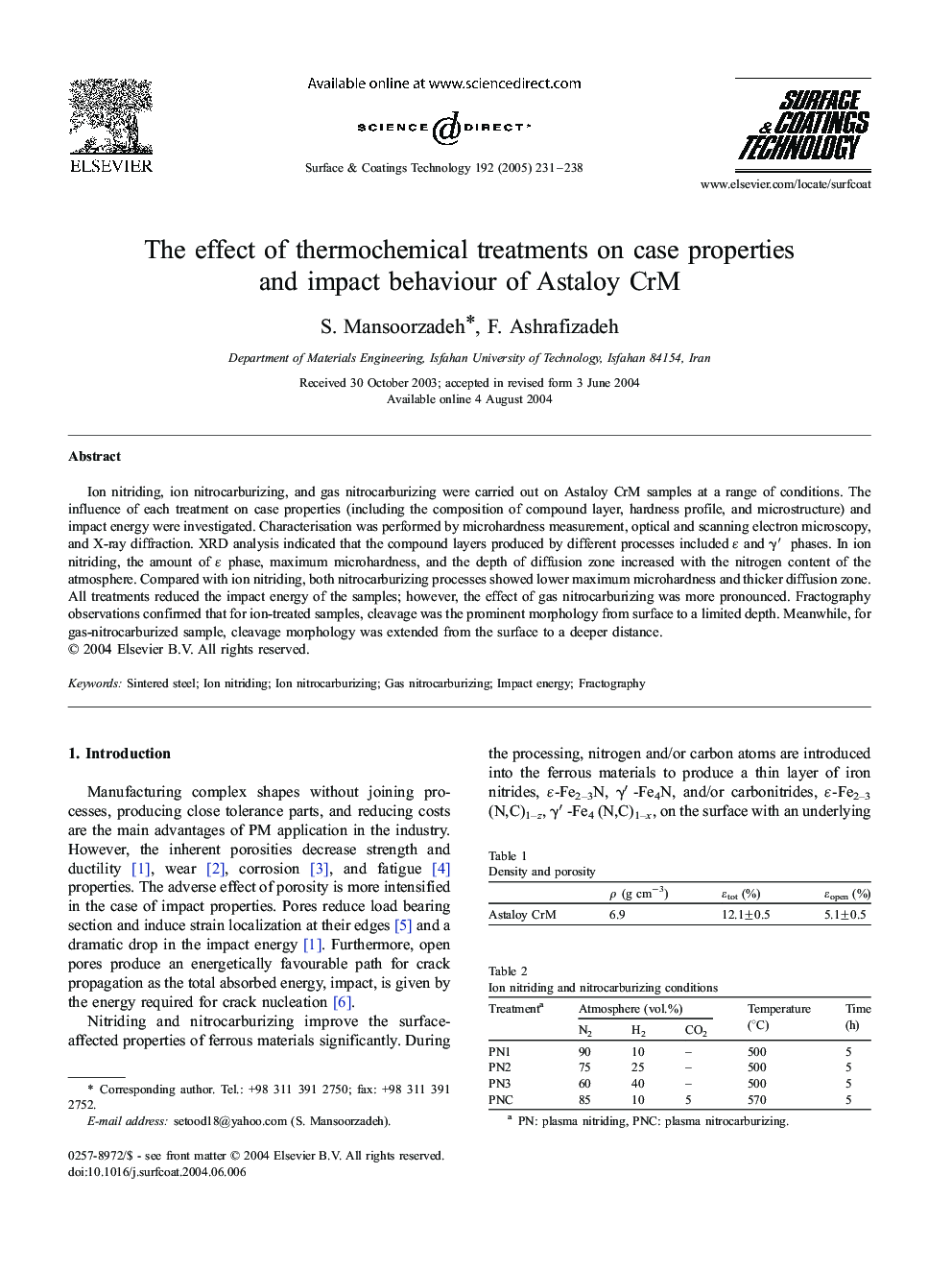| Article ID | Journal | Published Year | Pages | File Type |
|---|---|---|---|---|
| 9809882 | Surface and Coatings Technology | 2005 | 8 Pages |
Abstract
Ion nitriding, ion nitrocarburizing, and gas nitrocarburizing were carried out on Astaloy CrM samples at a range of conditions. The influence of each treatment on case properties (including the composition of compound layer, hardness profile, and microstructure) and impact energy were investigated. Characterisation was performed by microhardness measurement, optical and scanning electron microscopy, and X-ray diffraction. XRD analysis indicated that the compound layers produced by different processes included É and γⲠphases. In ion nitriding, the amount of É phase, maximum microhardness, and the depth of diffusion zone increased with the nitrogen content of the atmosphere. Compared with ion nitriding, both nitrocarburizing processes showed lower maximum microhardness and thicker diffusion zone. All treatments reduced the impact energy of the samples; however, the effect of gas nitrocarburizing was more pronounced. Fractography observations confirmed that for ion-treated samples, cleavage was the prominent morphology from surface to a limited depth. Meanwhile, for gas-nitrocarburized sample, cleavage morphology was extended from the surface to a deeper distance.
Related Topics
Physical Sciences and Engineering
Materials Science
Nanotechnology
Authors
S. Mansoorzadeh, F. Ashrafizadeh,
